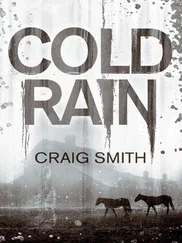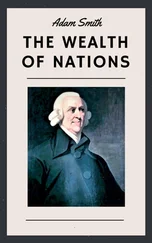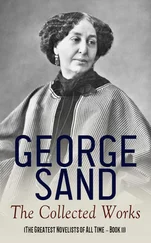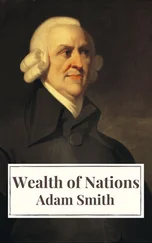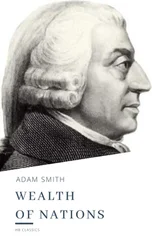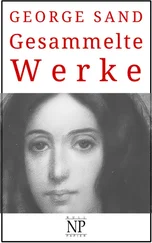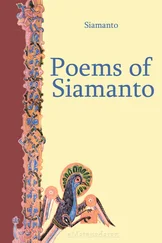As we noted above, the Scottish literati were sympathetic to the politics of the Whig approach, but they were not attracted to the arguments used to support it. 39The main reason for this was that these arguments failed to account for the reality of the nature of social life. Society, as Hume pointed out, was not a contract: there had never been a social contract, and even if there had been, it would not provide an adequate basis for the legitimacy of present governments. 40The evidence, as Adam Ferguson pointed out, showed that humans had always been social and so there was no state of nature that they left through a contract to enter society. 41This, as Hume noted, was obvious on a conceptual level, because the idea of a contract is based on an existing convention of promise keeping, a convention that can only exist in society. The concept of a contract is itself a product of a time when humans already lived together in society. So, if the origin of society did not lie in contracts, where did it lie? The answer for Smith and his fellow Scots lay in the examination of history. But the historical record for the distant past was at best imperfect, and in reality non-existent: history only develops long after humans have become social. What was required was a way of developing a theoretical account of the earliest stages of human society that was more closely related to the evidence that was available.
The shared methodology that the Scots developed to explore the deep past has come to be known as ‘conjectural’ history. The term comes from a line in Dugald Stewart’s biography of Smith where he describes the method as ‘Theoretical’ or ‘Conjectural’ or ‘Natural’ History. 42The example that Stewart chooses to illustrate Smith’s use of the method is the ‘Considerations Concerning the First Formations of Languages’. Smith attached this essay to Moral Sentiments from the third edition of 1767 onwards, and it is a good illustration of his more general approach to historical explanation. As Stewart points out, it is impossible for us to gain knowledge of the actual early development of language and yet, to quote him,
if we can shew, from the known principles of human nature, how all its various parts might gradually have arisen, the mind is not only to a certain degree satisfied, but a check is given to that indolent philosophy, which refers to a miracle, whatever appearances, both in the natural and moral worlds, it is unable to explain. 43
Theoretical history is a form of scientific explanation that provides a plausible account of the operation of some particular phenomenon by using the known to account for the unknown.
Smith’s theory of language deals with an issue that was discussed by a number of eighteenth-century thinkers in just such a way. In the absence of a direct historical record, he theorizes a situation based on what we know of human behaviour and what we know of the basics of social interaction. Two ‘savages’ meet and very soon develop vocal signals to identify common objects. This aids communication between them and gradually evolves into a system of classification based on the association of ideas. As a result, languages develop through a ‘natural’ disposition to name similar objects in a similar way and then to develop this into a class of objects, and then into a way of describing the plural from the singular occurrence of the same object. So a thing (tree) becomes a word ‘tree’ which becomes a plural ‘trees’. Similarly, the quality that marks out the class develops from a description to a quality, so green becomes greenness. Languages then develop words to describe the relation between objects and to allow us to differentiate between them. From here we see the development of linguistic categories and concepts such as numbers, gradually leading to the development of grammar and an evolved standardization of pronunciation. For Smith, languages develop from everyday use rather than abstract philosophy, and so these concepts exist before we recognize them on the level of philosophy. Languages give us the basis for abstract thought, and this continues to evolve as we develop written languages. The theoretical account of language is one based on its gradual evolution from the unintended consequences of human social life. 44
Conjectural history also represents a desire to account for the diversity of forms of human society, and for the fact that societies change form over time. We are faced by a lack of direct evidence of the early history of our own society, so rather than create imaginary states of nature like the contract theorists do, we should instead look to the evidence of the condition of other societies. This method is based on the assumption that there are sufficient underlying universalities of human nature and human social life to make meaningful comparisons. Given what we know about human nature from the observation of human life from the historical record and contemporary societies, we can form theories about the sorts of institutions and practices that may have existed in the distant past. The aim is not to invent history, but rather to create a theoretical understanding of the likely path of human development. What is of interest here is not the history of any one society, but rather to draw on the evidence of different societies to develop a theory of the historical development of ‘society’ as a category of social explanation.
In the Lectures on Jurisprudence , Smith makes extensive use of the method. The lectures include a series of case studies in comparative law where the examples of different legal systems’ responses to shared practices, such as property ownership or inheritance, are used to make generalizations about how similar types of society develop similar practices. Smith draws extensively on Scottish and European examples, but he also draws on the description of the social practices of the Native American tribes that had been provided in the accounts of travellers. This was a way of acquiring information about a society that existed in a stage of development that was similar to that of our own ancestors.
By comparing several of these accounts, we can corroborate the evidence as accurate on a descriptive level, while at the same time identifying the universal aspects shared by that type of society. We can use the historical evidence to compare and ‘experiment’, discounting material that contradicts what we know about human nature and generalizing from what remains. The point is not to discover absolutely similar institutions or beliefs across societies, but rather to note sufficient similarities to generalize about ‘types’.
In Smith’s hands, this becomes what has come to be known as the ‘four stages’ theory. The theory provides a schema for the identification of types of society based on the main way of securing subsistence: hunting, shepherding, agriculture, and commerce. 45We will discuss the details of Smith’s application of the theory in more detail in chapter 5, but for the present discussion a broad outline of the view will allow us to see the methodology that he adopts to flesh out his application of science to social matters. In the Lectures on Jurisprudence , there are a number of applications of the theory, but perhaps the clearest is the discussion of property. Smith’s aim is to examine the origin and development of property as absolutely necessary to the existence of all societies. Each of the stages of society has a different conception of ownership that reflects the circumstances of that society. Hunting societies tend to have an undeveloped and immediate idea of property in what is currently to hand or in the animal that has just been caught. Later the idea of owning livestock over time emerges in a shepherding society, an idea that extends to ownership of land once agriculture has developed, and eventually property is extended to intangible things like money and shares in a commercial society. Understanding the differences between the concept of property in each type of society gives us a better understanding of the nature of property as a social category, while at the same time helping us to understand how the institution of property functions in our own society.
Читать дальше


